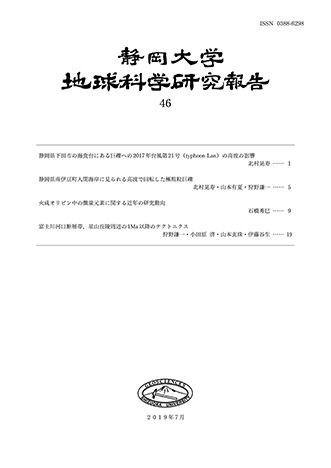Recent studies of minor elements (CaO, Al
2O
3, MnO, NiO, P
2O
5 and H
2O) in igneous olivines are reviewed. CaO content is used to distinguish between igneous and peridotitic olivines because CaO contents of igneous and peridotitic olivines are typically higher and lower than ~0.1 wt.%, respectively. However, recent studies suggest that olivine-melt Ca partition coefficient decreases as melt H
2O content increases, and as a result, arc magmas sometimes crystallize olivines with CaO content comparable to those of peridotitic olivines. Therefore, it is not straightforward to distinguish between igneous and peridotitic olivines in arc magmas based on only CaO content. Aluminum content of olivine in equilibrium with spinel increases as temperature increases; the relation is formulated as Al-in-olivine geothermometer, which enables us to estimate crystallization temperatures of igneous olivines. Nickel contents and Mn/Fe ratios of olivines are used to identify the source lithology of their parental magmas; Ni content and Mn/Fe ratio are thought to increase and decrease with increasing a proportion of pyroxenite-derived component in the parental melt, respectively. However, recent experimental and petrological studies contest the validity of this notion. Phosphorus concentration mapping is used to clarify crystal growth kinetics and diffusion processes of igneous olivines. The results suggest that dendritic growth is a common growth mechanism of igneous olivines. Hydrogen contents in igneous olivines are 10–100 times lower than those of peridotite-derived olivine xenocrysts. Hydrogen diffusion is significantly rapid in olivine, and therefore H
2O contents of olivine-hosted melt inclusions reequilibrate with the olivine-hosting magmas in short time. Minor elements in igneous olivines offer constraints on pre-eruptive magmatic conditions and crystallization process, but extracting information about physicochemical conditions and source lithology of their parental melts is not straightforward.
View full abstract
